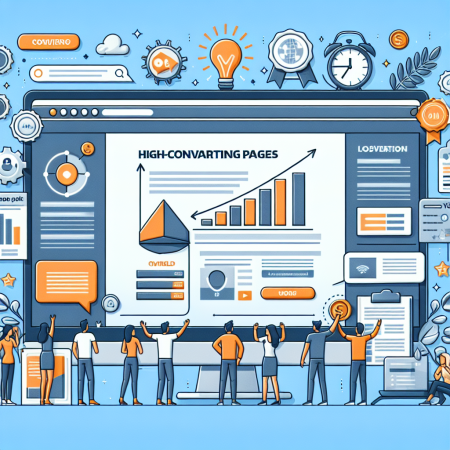How to Create High-Converting Landing Pages
Effective Landing Page Design
1. Clear and Consistent Messaging
When it comes to creating high-converting landing pages, clarity is key. Ensure that your messaging is clear, concise, and consistent throughout the page. Use compelling headlines to grab the visitor’s attention and clearly communicate the value proposition.
2. Strategic Use of Visual Elements
Visual elements such as images, videos, and infographics can enhance the overall design of your landing page and help convey your message more effectively. Ensure that the visuals are relevant to your offer and are used strategically to guide the visitor towards the call-to-action.
3. Mobile-Optimized Design
In today’s mobile-centric world, it is crucial to optimize your landing pages for mobile devices. Ensure that your design is responsive and provides a seamless user experience across different screen sizes and devices.
Compelling Call-to-Action
1. Clear and Actionable CTA
Your call-to-action (CTA) should be clear, concise, and actionable. Use strong verbs that prompt the visitor to take the desired action, whether it’s signing up for a newsletter, downloading a resource, or making a purchase.
2. Placement and Visibility
The placement of your CTA button can significantly impact conversion rates. Ensure that it is prominently displayed on the page, using contrasting colors to make it stand out. Test different placements to find the optimal position for maximum impact.
3. Compelling Copywriting
The copy surrounding your CTA should be persuasive and compelling. Clearly articulate the benefits of taking action and create a sense of urgency to encourage immediate engagement.
Engaging Content Creation
1. Captivating Headlines and Subheadings
Strong headlines and subheadings can capture attention and entice visitors to keep reading. Use active language and convey the value proposition upfront to hook the reader.
2. Customer-Centric Content
Create content that speaks directly to the needs and pain points of your target audience. Tailor your message to address their specific challenges and offer solutions that resonate with them.
3. Visual Storytelling
Engage your audience through visual storytelling by using images, videos, and interactive elements. Visual content can help create a more immersive experience and evoke emotional responses that drive action.
A/B Testing Strategies
1. Identify Key Metrics
Prior to conducting A/B tests, define the key metrics that you will use to measure success. Whether it’s conversion rate, click-through rate, or bounce rate, having clear objectives will guide your testing process.
2. Test Variables Incrementally
When running A/B tests, focus on testing one variable at a time to accurately determine its impact on conversions. This iterative approach allows you to make data-driven decisions and continuously improve your landing pages.
3. Analyze and Iterate
After running A/B tests, analyze the results to identify trends and insights. Use this data to inform future optimizations and iterate on your landing page design and copy for ongoing improvements.
Conversion Rate Optimization
1. User-Focused Design
Design your landing pages with the user in mind, focusing on creating a seamless and intuitive user experience. Remove any distractions that may divert attention from the main conversion goal.
2. Use Social Proof
Incorporate social proof elements such as testimonials, reviews, or case studies to build credibility and trust with your visitors. Positive endorsements from satisfied customers can help alleviate any concerns and encourage conversions.
3. Implement Exit-Intent Popups
Consider using exit-intent popups to re-engage visitors who are about to leave your site. Offer a compelling last-minute offer or incentive to capture their attention and encourage them to stay or convert.

